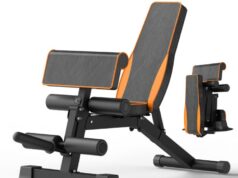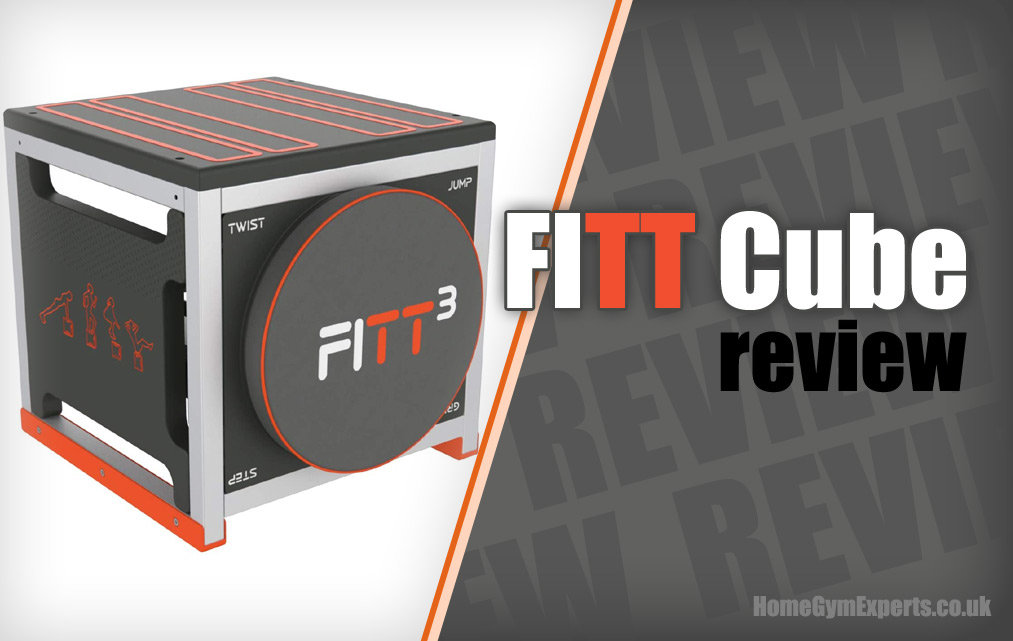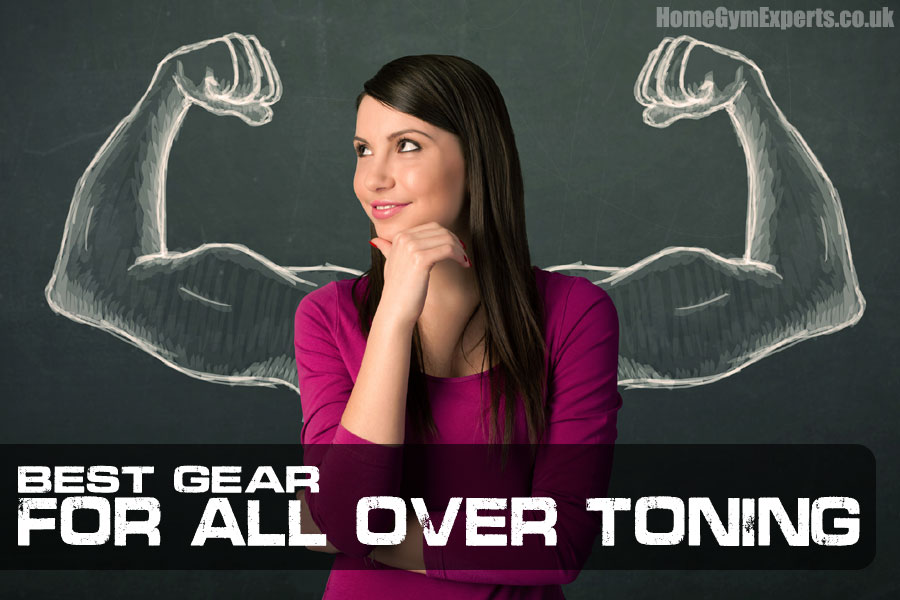The ultimate guide to home gym conversion
If you’re looking to create your own gym, rather than go out to a commercial one, one of the most common spaces people convert into a home gym is their garage. On paper, it’s basically the perfect solution. A lot of people use their garages for extra storage anyway and with a lot of unused wall and ceiling space and reinforced floors, most garages are ready to be converted into a gym with just a bit of smart thought, hard work and a little cash.
In this guide, we’ll talk you through all the pitfalls, things to look out for and how to save time and money converting your garage into a fitness studio you’ll want to show off!
Step 1: Assess and prepare
The first thing you always need to do when creating a home gym is to look at what you have to work with. As much as we’d all love to have no limitations, no situation is ever going to be perfect.
Usage
The way you’re going to set up your home gym is going to change depending entirely on what you’re going to use it for.
Someone looking to train for triathlons, for example, is likely to invest most of their time and resources into big, heavy cardio machines, as well as a lot of recovery. Whereas someone focused on powerlifting is going to need a squat rack or power cage and a large variety of weights.
So start by assessing your goals and create your fitness space around them. You’ll find it much simpler to hit your objectives if your workout space is literally designed to make it easier.
What’s the perfect garage gym size?
The average single garage in the UK is around 9 by 18 feet or 160 sq. ft. That’s a decent amount of space, but it comes with certain limitations.
First off, remember that a piece of equipment needs more working space than its footprint might suggest. Whether you’re buying a weight machine or a treadmill, you’re going to need space to get onto and off the machine and if you’re lifting free weights, then you’re definitely going to need extra space around the edges.
You can counteract this by buying exercise machines that are specifically designed for small spaces, like these, saving you a massive amount of space. [LINK TO SMALL MULTIGYM ARTICLE]
In our opinion, the best way to work out your space is the most old fashioned method. Take a piece of paper and a pencil and sketch out your working space. Box out where you’re planning on putting your large pieces of equipment first, then build around it. It’s much easier to store a set of resistance bands than it is an exercise bike and there’s a lot of ways to store things in a garage, which we’ll get to shortly.
How much does a home gym cost?
As much as we’d love to have an infinite budget, everyone’s constrained and it’s important to get the most bang for your buck possible.
Again, the easiest way to do this is by planning everything out in advance. Start by looking at what you have and what you can use. If you’re not planning on taking up running professionally, then you might be able to get away without a treadmill and just heading out for a jog instead, which can save you money and space.
Step 2: Set up the space
Even though a garage can be an awesome home gym, it does require a little bit of set up upfront. A quick checklist should include:
Cleaning
If you’re serious about your health and fitness, you’re going to be spending a lot of time in your new gym, sweating, breathing heavy and rolling around on the floor.
That’s already going to take a toll and doing all that in the dust and dirt isn’t going to make matters better. Plus if you’re anything like us, there’s probably a whole load of junk in your garage that you could safely get rid of, that could save you even more space.
So do yourself a favour and spend a few hours sorting the space before you start installing anything new.
Power
Most modern exercise machines need a power socket and you’re probably going to need at least one or two spare for a TV, Wi-Fi jack, or even just your phone charger.
We don’t recommend using extension leads, especially on big machines that can need a heavy load. Running power to your garage isn’t particularly expensive and while you’re at it, it’s worth installing cable management.
Lighting
A lot of older garages don’t have the best lighting. In the worst case, you could be looking at a single bare bulb.
Decent strip lighting will make the place look more appealing, which helps psychologically when it comes to exercise, as well as helping with safety and ease.
Heating
Most garages won’t have the same level of insulation as the rest of your home, which can lead to hot and sweaty summers and freezing cold winters.
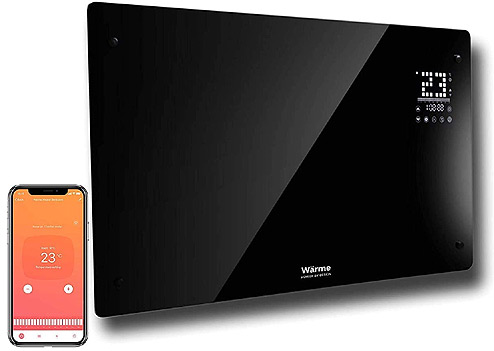
Above: Wärme Designer WiFi Electric Wall Heater Panel – Amazon UK
If you live somewhere that sees a lot of harsh weather, take the time to set up for it. It’s normally not worth insulating your garage, but a simple electric heater or small air conditioning unit can be all it takes to make your garage much more liveable.
Storage
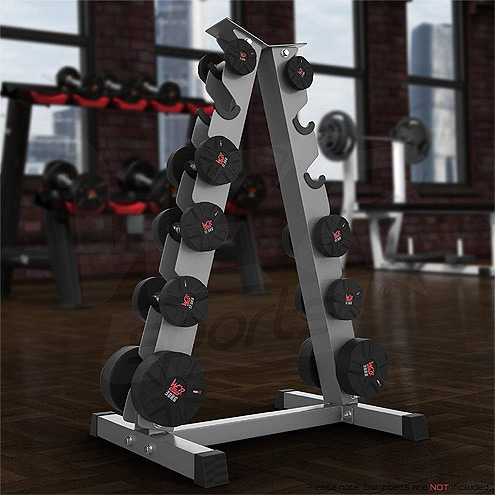
One of the main advantages of home gyms is the sheer amount of stuff that’s available for purchase. You’ve got a near-infinite array of storage options, so no matter what you’re looking for, there are ways to find it, including:
- Standard storage containers: Stackable, available in almost any size, shape and colour, storage boxes are your best friend when it comes to storing things like resistance bands, jump ropes, water bottles and other small items.
- Shelving: Can be a great option for dumbbells, kettlebells, medicine balls and other assorted weights, as well as all of your gym gear.
- Weight racks: Are a given if you have a dumbbell set or a lot of plates for your Olympic bar
- Ceiling racks: If you have a bike, a ceiling rack is one of the best options for your garage. Simple to install, it moves your bike out of the way, saving tons of room
Flooring
It might not seem like it, but gym flooring is one of the most essential things you have to consider when you’re setting up your gym. It’s so important, we wrote an entire article on it, which you can find right here [LINK]
In all likelihood, your garage has a poured concrete floor. It’s rough, it’s dirty and it’s going to provide all the wrong kind of support, especially if you’re lifting heavy.
Our recommendation is to invest in some high-quality gym flooring. Rubber flooring tiles are cheap, easy to lay down, easy to replace and provide a bunch of support for your joints. It’s by far the best option.
Step 3: What to put in a home gym
If you’re not sure what to buy, there’s a shortlist of essentials we’d recommend to almost anyone.
Resistance training is king, so in our opinion, you should always build around that. And if you’re looking to train properly, there’s only one way to do so.
The Olympic bar
Probably the most versatile tool you could buy for your home gym, a barbell can be used for a huge range of exercises, giving you a complete workout.
Recommended: The DTX Fitness Bar (Amazon UK) is an absolutely cracking Olympic bar that will be perfect for any home gym. It’s also a good bit cheaper than some other bars. Nice.
If you’re lifting heavy with a bar, you’re also going to need:
A squat rack
There’s no safer, easier way to lift than in a squat rack. Made from solid metal, they provide a huge amount of support, catching the bar in case of accidents and helping with set up and storage.
Recommended: DTX’s Squat Rack is unbelievably sturdy and it’s perfect for home gyms, thanks largely to its reduced height factor. It’s also available at a budget price on Amazon.
Dumbbells or a kettlebell set
Dumbbells and kettlebells let you train your muscles in isolation, in a way that a full-on bar doesn’t allow.
Full sets can take up a lot of space, even with storage, so we’d recommend starting with a single kettlebell.
Recommended: JLL has some really good quality dumbbells (Amazon UK) I’ve bought and tested. Definitely give them a go. Hex dumbbells are ideal for home gyms as you can do push-ups on them and they’re easy to store.
We also love adjustable dumbbells, which can save a huge amount of room and can be picked up for a really reasonable price. Our full guide on the best adjustable dumbbells can be found here.
Other things that can be picked up cheaply include:
- A pull up bar: A great bodyweight workout, most squat racks will have a pull-up bar built-in, but you can also buy door hanging or wall fixed bars.
- Resistance bands: Great for warming up, as well as adding some support on pull up bars or when lifting weights, resistance bands are cheap and simple to store.
- A skipping rope: One of the best warm-ups and cardio workouts, there’s a reason pros like boxers have relied on skipping for decades and they’re super cheap.
Step 4: Actually use it
The biggest thing holding most people back from hitting their goals is one simple fact:
Consistency
Once you’ve set up your home gym, make sure you use it. Luckily, the simple advantage of having a home gym puts you a huge step ahead of most other people. It’s a huge time saver and the psychological benefits of having your own space are massive.
So get in there and start and we’re sure you’ll hit your goals and be where you want to be in no time.
References & Further Reading
- How many days training a week should you do?
- HSS – Preventing Injuries While Working Out at Home
- NHS – strength exercises
- Home Gym Benefits – 5 Reasons They Beat Commercial Gyms
- Gym Gear Wars: What’s the Best Home Exercise Equipment for Weight Loss?


